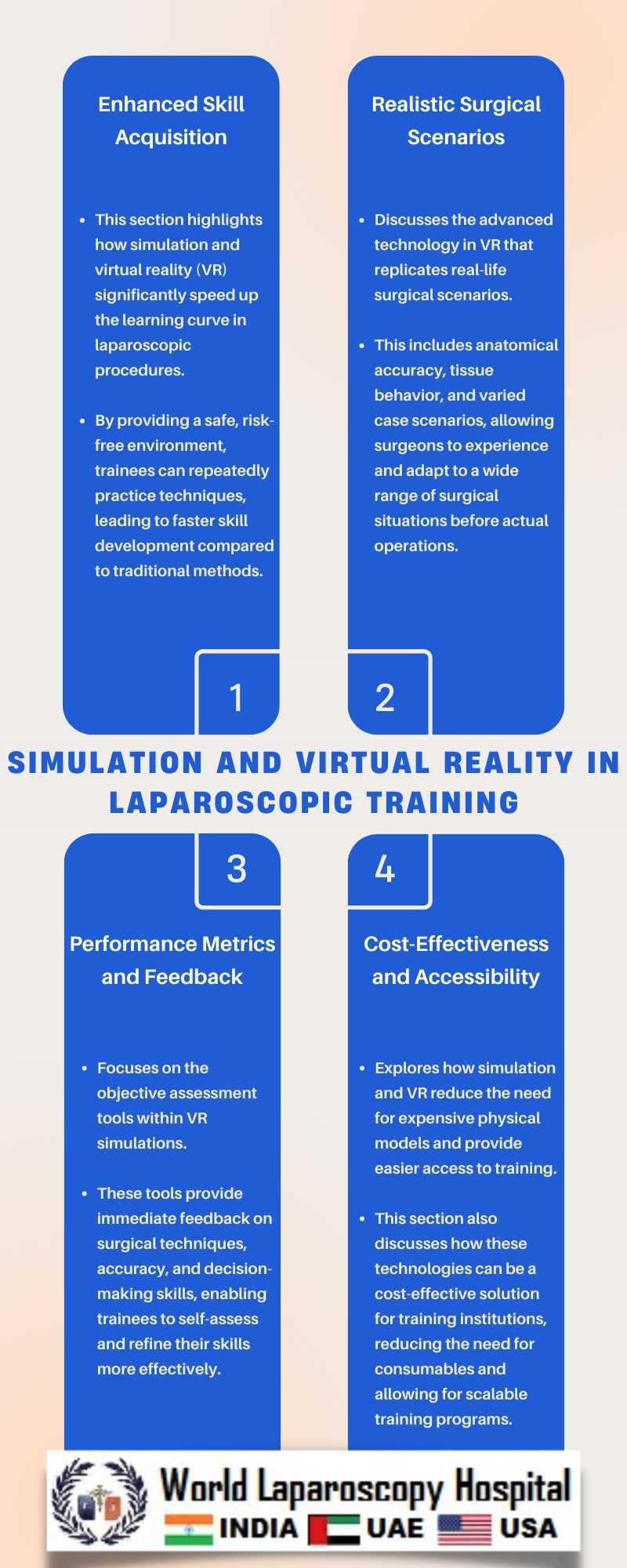The integration of simulation and virtual reality (VR) into laparoscopic training represents a significant advancement in surgical education, offering a safe, controlled, and realistic environment for developing skills without the risks associated with traditional training methods. This essay explores the application, benefits, challenges, and future potential of simulation and virtual reality in laparoscopic training.

Application in Laparoscopic Training
Simulation and VR technologies have been increasingly adopted in laparoscopic training programs worldwide. These technologies provide a platform for trainee surgeons to practice various procedures, from basic tasks like hand-eye coordination and instrument handling to more complex operations such as cholecystectomy or appendectomy. Trainees can rehearse these procedures repeatedly in a simulated environment that closely mimics the real-life scenarios they will encounter.
Benefits of Simulation and VR in Training
1. Risk-Free Learning Environment: Perhaps the most significant advantage is the ability to practice without risk to patients. Trainees can make mistakes and learn from them in a safe environment, which is not always possible in traditional surgical training.
2. Objective Skill Assessment: Simulation provides objective metrics for assessing a trainee's performance, including precision, speed, and error rate. This data-driven approach facilitates more structured and individualized training programs.
3. Enhanced Skill Acquisition and Retention: Repetitive practice in a simulated environment can accelerate the learning curve for laparoscopic techniques. Skills learned in VR have been shown to transfer to the operating room, indicating effective skill acquisition and retention.
4. Standardization of Training: VR simulation allows for the standardization of training across different institutions, ensuring that all trainees meet the same level of competency before progressing to real-life surgeries.
Challenges and Limitations
Despite its benefits, the integration of simulation and VR in laparoscopic training faces several challenges:
1. High Costs: The initial investment for high-quality VR equipment and software can be substantial, potentially limiting its accessibility for some institutions.
2. Technological Limitations: While VR technology has advanced significantly, it still cannot fully replicate the tactile feedback and variability of real human tissues. This limitation can affect the realism of the training experience.
3. Learning Curve for Technology Use: Both trainers and trainees may require time to adapt to these technologies, necessitating additional training and adjustment periods.
Future Potential
The future of simulation and VR in laparoscopic training is promising and likely to witness substantial growth and innovation. Continued advancements in technology will enhance the realism and effectiveness of simulations. The integration of artificial intelligence could provide more personalized training experiences and predictive analytics for skill development. Moreover, the increasing affordability of VR technology will make it more accessible to a wider range of training programs.
Conclusion
Simulation and virtual reality are transforming the landscape of laparoscopic training, providing a risk-free, data-driven, and highly effective platform for skill development. While challenges such as cost and technological limitations exist, the potential benefits and future advancements in this field hold immense promise for the evolution of surgical education and the consequent improvement in patient care.